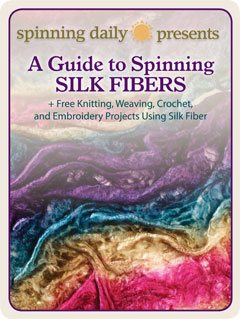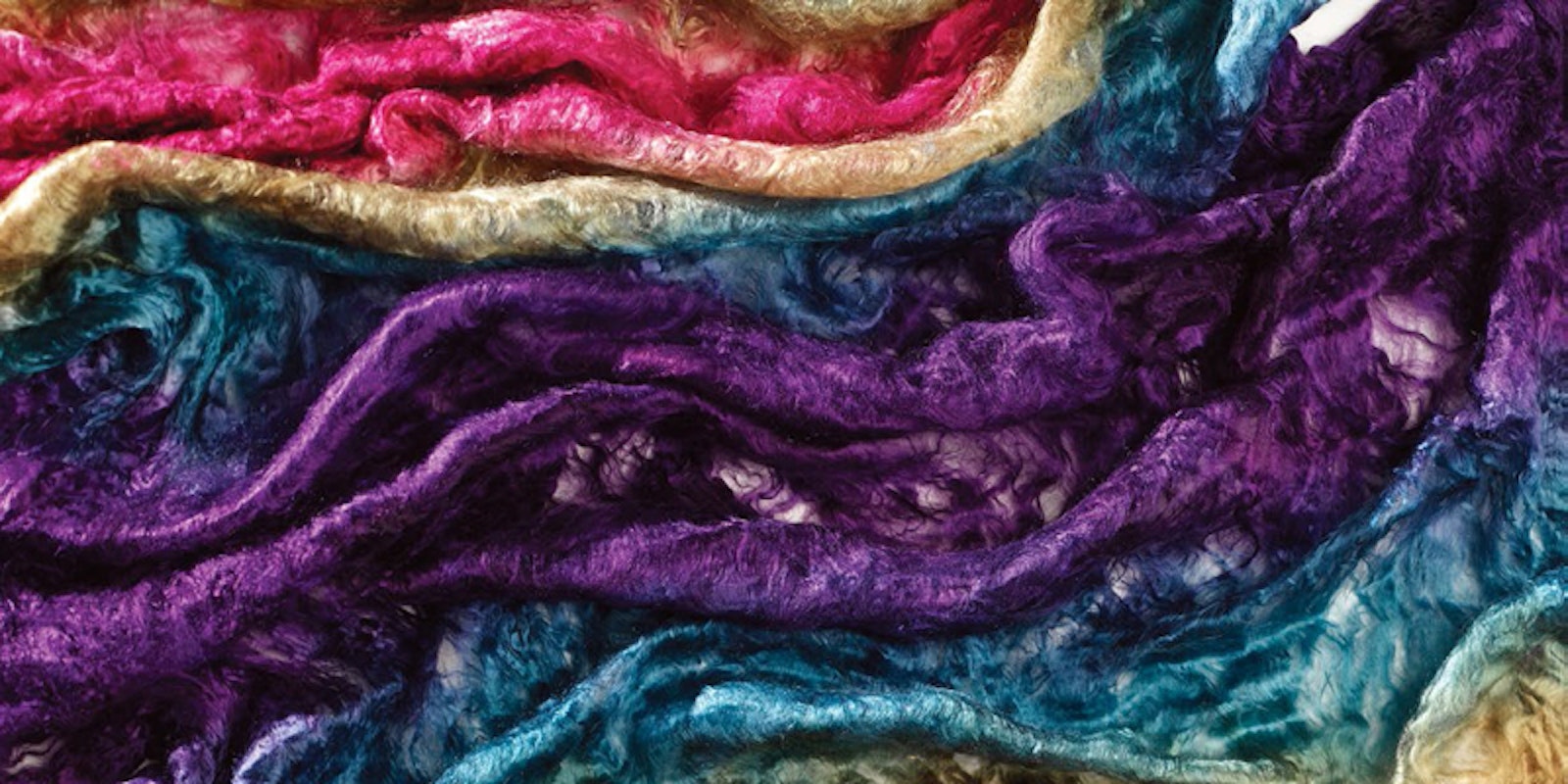
I love this time of year—I love crisp air, frosty window panes, and steaming cups of tea. I love rolling out dough and cutting out cookies with my girls. I love taking a bit of time to relax, make things, and be thankful. And I'm thankful for you. That's why we made A Guide to Spinning Silk Fibers: + Free Knitting, Weaving, Crochet, and Embroidery Projects Using Silk Fiber, a little bundle of colorful, silky goodness to give to you. We bundled up four articles about spinning silk for weaving, knitting, crocheting, and embroidering into a tidy package. Enjoy!
Silk is one of the luxury fibers that new spinners are likely to try first after they've mastered wool—it is so seductively beautiful with its incredible luster and ability to take color. But spinning silk is a little trickier than spinning wool, and it is really nice to have a couple (or three!) expert spinners by your side as you try it out.
Spinning Silk for Knitting

By Carol Huebscher Rhoades Carol Huebscher Rhoades shares her experience with the handspun fibers, and how it inspired her to create a pattern for a useful item that was easy and quick to make. After some sampling with a beautifully dyed brick of bombyx silk, Carol decided that a cap would display the lace pattern she desired to use nicely and make a fairly easy project. Carol suggests that knitting silk fibers with bamboo or wood needles (be sure they are absolutely smooth) is easier than with metal needles, because the fiber is slippery.
Spinning Silk for Weaving

By Mary Spanos The most daunting aspect of this project might also be the most appealing aspect of the silk brick: those beautiful bright colors! While weaving her first satin weave with other fibers, Mary realized satin weave fabric could be a perfect solution to handle painted silk when wanting to preserve the color that compelled you to buy the fiber in the first place. Explore the joys of weaving with your handspun silk in this beautiful project for weaving fabric from silk fiber.
Spinning Silk for Crochet

Spinning a Navajo Three-Ply Yarn to Make Colorful Crochet Bead Ropes by Dodie Rush Spinners can place the order of colors in a yarn and control the length of color sections keeping one color distinct from another by Navajo-plying (making a three-ply yarn by chaining a single strand of yarn from one bobbin). The threads for these bracelets, cords, and samples are spun from dyed tops of tussah or bombyx silk. Learn the techniques used to crochet a bead rope bracelet or necklace from bombyx or tussah silk.
Spinning Silk for Embroidery

Give Yourself a Medal! by Carol Huebscher Rhoades The Give Yourself a Medal! is a fun, simple embroidery project that requires a small amount of handspun embroidery thread. Dress up a garment or small handmade item with a little bit of handspun silk embroidery thread. Get inspired by this free handspun silk embroidery project.
Making Silk Yarn without Spinning

_Mawata Scarf by Nancy Morey _ Even without spinning or reeling, you can enjoy the process of making silk yarn. See “Working with Mawata” for information on working with this preparation, then practice pulling silk into unspun yarn. This simple pattern shows off the sheen and softness of the fiber; pull the mawata very thin for a lacier effect.
If you're really new to spinning, then you may not know that silk is a protein fiber (like wool) produced by silkworms to make the cocoons that help them transform into silk moths. The art of cultivating silk or sericulture began in China and has been perfected over many thousands of years. Tussah silk comes from wild silkworms that have a varied plant diet, whereas bombyx silk is cultivated from Bombyx mori silkworms that have been fed an exclusive diet of mulberry leaves. Tussah is naturally a golden color, while bombyx silk is a brilliant white. In most cases, bombyx silk is reeled or unwound from the cocoons after the worms have been stifled to prevent them from eating through the layers of silk filaments after their transformation is complete. Tussah silk cocoons can be gathered after the moths have emerged—the filaments have been cut and are short strands that are then combed into top. The worms leave a gummy residue called sericin on the silk as it is extruded—it has a pungent, salty odor that can linger if not properly scoured from the fibers. Understanding a little about where silk comes from can help a spinner appreciate why silk has been so valued and sought after by generations of spinners.
Happy spinning!


